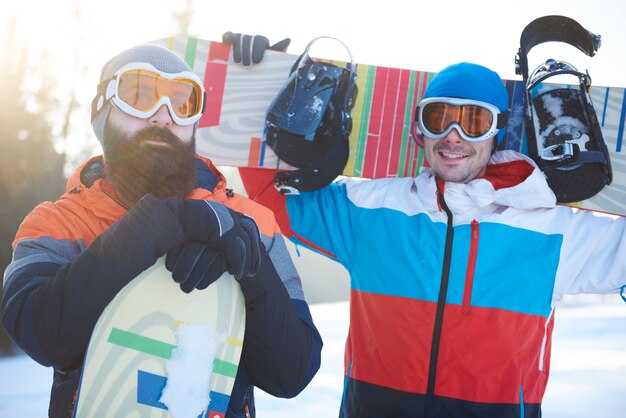Book your flights early and assemble a compact, must-haves kit for the slopes. For your luggage, aim for a 7–10 kg carry-on if possible, plus a spare mid-layer that can be tied around the waist between lifts. The right gear choice saves space and keeps you comfortable on crowded days. Pack a simple lunch or plan steady on-mountain snacks to maintain energy from first lift to last run.
On the hill, exploring options takes a plan: pick three core 활동 each day and set a flexible fallback for bad visibility. never skip a quick warm-up at the base to prime muscles. This keeps your pace steady and cuts fatigue. If you are new to a resort, start on blue runs to build confidence; the level system helps you match terrain safely.
During the day, stay hydrated, take regular breaks, and look for a sheltered spot when wind picks up. Absolutely avoid fatigue by pacing yourself and listening to your body’s signals. If you feel a twinge of injury, stop, rest, and regroup. Stretch at the lodge, pace descents, and carry a small first-aid kit with blister tape.
People often chase a 럭셔리 vibe, but balance matters. A mid-range ski vacation can feel premium if you pick a well-located lodge, a dry gear room, and a reliable shuttle plan. Plus, add a brief safety briefing with staff so you know signs of fatigue and where to get help. Weather patterns are changing, so stay flexible with your agenda and slopes.
Look ahead to daily timing: start early, take a mid-mountain break, and plan a longer lunch to recharge. This helps you maintain energy, avoid long lift lines, and gives you time to reassess route choices when light or visibility shifts.
How to Make the Most of Your Ski Trip: Practical Tips and Driving Challenges
Start your trip with a concrete plan: check weather and road conditions for the route, fit winter tires or chains for the steep sections, and map rest stops every two hours. This setup reduces stress and helps sleep stay balanced on the road.
Which seasons bring variable snowfall across the area, you’ll encounter altered visibility, gusty winds, and occasional closures for their route through the mountains. Massive changing conditions require slowing down on down grades, finding sheltered rests, and showing patience to other drivers. Tailor the pace to the season and the area.
Before you depart, check the vehicle’s weight distribution and pack light but complete: sleeping bag, water, snacks, first-aid kit, flashlight, and a knee brace if you have past knee issues. If someone in your party has a dislocated knee history, include a knee sleeve and supportive brace. A spare warm layer in the cab helps during delays. Just in case, keep a compact blanket in reach.
Key Driving Challenges on Winter Roads
Common issues include icy patches, reduced grip, and limited daylight. Maintain a safe following distance, use low gear on descents, and avoid sudden steering or braking. If chains or studs are required, fit them before you reach the steep section; keep a compact traction aid in the trunk for unexpected detours. Have 2–3 alternative routes planned in case the main road is closed. Typically, conditions call for leaving a margin of 5–10 minutes per 100 km of travel.
Practical Parking and Comfort at the Base

Arriving at the ski area, pick a level, shaded spot away from heavy traffic. Park and switch to gear that supports knee and hip comfort, doing a 5-minute stretch routine for the weight and muscles. In the lodge, theres an old-world charm that encourages staying steady, hydrating, and following a simple sleep plan to recover after the day. For home base routines, keep your usual sleep window and stay consistent with meals to aid recovery.
| 측면 | Challenge | 팁 | Why it helps |
|---|---|---|---|
| Descents | Icy patches, reduced grip | Use low gear, slow speed | Maintains control and reduces skids |
| Fatigue | Hours of driving through variable weather | Break every 2 hours; if needed, take a 15–20 minute nap | Keeps attention and reaction time high |
| Isolation | Long stretches with limited services | Fill fuel before exits; carry snacks and water | Prevents stress from delays |
| Equipment | Chains, gloves, charger, spare parts | Pack emergency kit and a spare warm layer | Reduces risk of delays and weather exposure |
Choose Dates with Reliable Snow and Manageable Crowds
Book a 5–7 day trip with midweek days in late January to early February or early March to lock in solid snow and shorter lift queues.
Courchevel is part of the largest linked ski area in the world, so a single base can lead to long days on a variety of routes without hopping hotels every night. Choose a central village in france to minimize transfers and maximize time on the slopes; passes that cover the entire area let you explore without backtracking, which helps you make the most of each day. In courchevel and the surrounding system, you can tailor your plan to fit your pace and avoid chasing after crowded spots all afternoon. They often spread across the valley, giving you flexibility if a run looks busy.
Smart date picks for snow reliability
Target windows when the snow system is strongest: late January through February, with a touch of early March. Although conditions vary, the elevated terrain tends to hold base depth, giving you reliable runs on most mornings. Check historical snow reports for courchevel and the Three Valleys before you book to avoid days when coverage is uncertain. A longer stay increases the chance of catching fresh powder, so you cant miss a good window.
Maximize time on the slopes and keep crowds manageable

Schedule weekdays to ride with shorter queues; weekends and school holidays bring a large number of people. If you stay in a central hotel, you can reach a new spot each day without a long transfer. Pack a light jacket for changing conditions, and keep a small supply of chocolate for quick energy on the chairlift. Reserve your passes early to lock in price and route access, since courchevel sits in the largest linked system in the world and you want to lead your day rather than chase it. Protect your ligament with proper warm-ups and gentle stretches, and remember: there is nothing wrong with taking a break when you need it to stay safe and comfortable on long runs. Include a quick shoulder mobility drill as part of your routine to cut fatigue on steeper sections.
Select a Resort and Terrain That Match Your Skill Level
Choose a resort with a clear skill ladder: there are three zones–green for beginners, blue for progression, and a wide, safe learning slope near the base. This setup promotes steady gains, reduces fatigue, and keeps the experience fun-filled. Sticking to green until you master controlled turns protects your quadriceps and health. At popular destinations like whistler, you’ll find stunning examples of this layout, with the largest beginner area anchoring the base. There, the number of blue runs often mirrors the green network, allowing you to transition when ready. The resort is offering guided tips and gentle slopes to practice on day one. There, thorens gear promotes stability on tricky days. Whilst you progress, this plan helps you build confidence without overdoing it.
Since this balance matters, aim for a daily rhythm that keeps sessions productive without overload, and just enough variety to stay engaged. That combination helps you come back again to improve, rather than burn out.
What to look for on the slopes
On the slopes, seek clear slope color coding, a dense network of green runs, and close proximity between base lifts and the learning zone. The best layouts offer a direct route back to the lift and straightforward direction signs, minimizing time wasted on map checks. Look for a well-groomed green network and a short, safe blue to test gradual skill growth through small challenges. The environment should feel welcoming for sports training and balance practice, not crowds pushing you off pace.
Plan your day for steady progress
Divide your day into three blocks: warm-up on greens, a controlled blue test, and a cool-down lap. Although it’s tempting to push, keep the challenge level aligned with your current fitness and balance. This approach often yields better results, because you’ll stay fresh there, show progress, and avoid stacking fatigue. Through consistent practice, you’ll build confidence and sport-specific stamina, key benefits that justify the time spent learning.
Pack Light but Fully Equipped: Layering, Gear, and On-Slope Comfort
Start with a 3-layer system: base, mid, outer shell, plus one pair of versatile ski boots that fit well for all-day on-snow use. Pack into a 30-40L daypack, and distribute weight evenly to reduce fatigue on long descents. Check booking details and plan transfers between destinations and cities to avoid surprises from delays; pick items that work from valley mornings to wind-swept ridges and green afternoons with views of landscapes from the mountain world from each day.
Layering plan
- Base layers: 2–3 tops and 2–3 bottoms in merino wool or high-quality synthetics; avoid cotton to stay dry when you sweat. For each forecast, select breathable fabrics that wick moisture from the skin.
- Mid layers: 1–2 fleece or lightweight insulated pieces; consider a diamond-quilted fleece for extra warmth without bulk.
- Outer shell: 1 waterproof, windproof, breathable jacket with pit zips; choose a color and cut that looks appropriate for both green slopes and alpine towns.
- Socks: 4–6 pairs of ski socks; a thin liner can help with foot fatigue on long days.
- Gloves and neck: 1 waterproof pair with a thin liner; 1 neck gaiter or balaclava for windy days; ensure a snug fit to protect the neck and wrists.
- Headwear: 1 beanie or helmet-friendly cap; goggles with two lenses for changing light conditions.
- Footwear: 1 pair of waterproof apres-ski boots for valley strolls and a compact travel pair for transit days.
- Extras: SPF 30+ sunscreen, lip balm, a small repair kit, and a compact map or offline navigation.
Gear and on-slope comfort
- Goggles or sunglasses: 2 lenses (clear for low light, tinted for bright sun) and an anti-fog strategy.
- Protection: helmet; consider wrist guards if you’re prone to slips; carry a lift pass holder to avoid dislocated moments.
- Packing weight: target 3–4 kg in your daypack; keep the rest in a checked bag if flying with skis, but optimize to reduce baggage size.
- Care: a small first aid kit, electrolyte sachets, lip balm; a neck warmer doubles as a scarf.
- Health and recovery: bring any required meds, and a simple stretching routine to protect the neck and back after transfers between valleys and cities.
- Beginner tips: test your system on a short run, adjust layers as you go, and fall safely by using proper stance and padding.
- Travel sanity: include a few surprises like a favorite snack or a friend’s lightweight item to make the day more enjoyable.
- Post-surgery note: if you’re recovering from surgery or managing health constraints, lean toward lighter layers and slower pace to keep moves smooth.
Organize your packing around next-day plans for valleys, the green landscapes, and urban destinations, then reduce clutter by sharing gear with friends. Time spent packing becomes more time on views, with moments spanned across cultures and the world, from the next morning to the next run across the mountains.
Maximize Time on the Mountain: Lift Strategies, Short Runs, and Warmups
Start by plotting a 2.5-hour mountain loop that centers on two high-throughput lifts near your base, a sequence of four short runs, and two brisk warmups. This setup keeps pace high and fatigue manageable, and it minimizes transfers between zones. источник confirms this approach yields more time on the mountain.
Choose lifts that lead to varied terrain: one fast quad, one gondola serving a sunny bowl. Aim for transfers under eight minutes. After each descent, perform a 3-minute reset: 1 minute light squats, 1 minute leg swings, and 1 minute hydration to recover without cooling down fully.
Short runs strategy: commit to 3–5 minute descents on alternating pitches to stay in the groove. Prioritize routes with quick transitions and gentle inclines to practice carving, then add a steeper mini‑challenge every third run for real improvement.
Warmups: a 5–7 minute dynamic routine before the first run–ankle circles, hip openers, walking lunges–then two minutes of rhythm skating on the flat to prime balance and coordination. Keep movements smooth to avoid early fatigue.
Gear and safety: balaclava ready, windproof layer in reach, sunscreen, hydration, and a compact snack. Check changing conditions, visibility, and avalanche warnings, and keep these essentials accessible in a small pack to stay ready for any shift in weather.
Where to go: Whistler, megève, and other favourite destinations offer quick loops near the base and mid-mountain sections. Plan two easy runs before progressing to a higher grade, and use these routes to build confidence while keeping the pace steady. Each destinations map promotes plenty of lift time and smooth transitions.
Lunch and post-ski wind-down: schedule a mid-mountain lunch to refuel and reset. A short break here keeps energy up for a couple more runs, and a relaxed après‑ski moment with wine can reward effort without breaking your rhythm.
Tracking progress: log the number of lifts used, runs completed, and total vertical for the day. Let the lead of the plan be clarity and consistency; fact: clearer pacing leads to better form and more confident days on the mountain.
Plan the Drive: Winter Road Prep, Weather Briefings, and Emergency Prep
Winter-Ready Gear and Quick Checks
Before you head out, test your tires and battery, confirm winter-rated tires with adequate tread, verify chains or traction mats are accessible, and carry a compact toolkit. Adjust the seat to a more comfortable chair-like position and set the mirrors for a clear view. Do a five-minute stretch to wake the legs and core–activate the quadriceps and calves–so your body stays alert on climbs through the mountains. Keep feet warm with proper footwear and carry an extra pair of socks for rest stops. Pack a basic first-aid kit, a flashlight, a reflective vest, and a small blanket; a portable power bank keeps devices charged during long stretches through spotty signal. For entertainment, bring a compact speaker or a Thorens record player if you want music during breaks, but keep volume low enough to hear road sounds. If you travel with a companion, divide route responsibilities and mark rest stops; plan to spend time exploring events and sample local cuisine at safe stops to break up the drive, plus regular stretch breaks every 90 minutes. If you drive in March, keep an eye on late-season storms. If conditions look uncertain, consider a safer option like blacklane for a portion of the trip; this can give you more peace of mind and gain easier overall travel flow.
Weather briefings and road conditions matter as you approach the mountains. Check the forecast before departure and recheck at least every 2–3 hours, especially when you approach high passes such as mountain corridors. Use official sources like national weather services and regional highway agencies; review road cameras, temperature trends, and avalanche advisories if relevant. Know where you are on the map and what goes on around you; as you drive onto winding segments, slow down and keep a larger following distance. Monitor wind, visibility, precipitation type, and storm events; stay alert for events that could close passes. If the forecast shifts, adjust your plan rather than pushing through unsafe routes. Pack a mobile battery pack and car charger so updates arrive without draining your energy. A simple rule: if conditions look bad, postpone the steep stretch, switch to a slower route, or pause at a spa or restaurant to ride out the worst. Remember that health and safety come first, and listening to your body keeps the trip enjoyable and sustainable.
Emergency prep keeps you confident on the road. Create a weather-aware plan that includes alternates, fuel stops, and emergency contacts. Keep the emergency kit in reach and add a few liters of water, high-energy snacks, and a compact insulating blanket. Check the spare tire, jack, and a multi-tool; keep jumper cables handy and consider a small shovel for snow if you might be stuck. Put warning triangles or flares in the trunk and ensure your phone has offline maps in case data service drops. Tell someone your route and ETA, and share a plan with your travel partner, including where you may stop for meals or rest. If you need to wait out a delay, stay with your vehicle, run the engine sparingly for heat, crack a window for ventilation, and conserve fuel while monitoring updates through your phone. When you reach your destination, treat yourself to spas and a nice meal–this prep makes the rest of your ski break smoother and safer. Bring along health-conscious snacks, and take time to stretch the legs and hips after you park, so your being feels ready for a day on the slopes.

 How to Make the Most of Your Ski Trip – Essential Tips for a Great Holiday">
How to Make the Most of Your Ski Trip – Essential Tips for a Great Holiday">

댓글